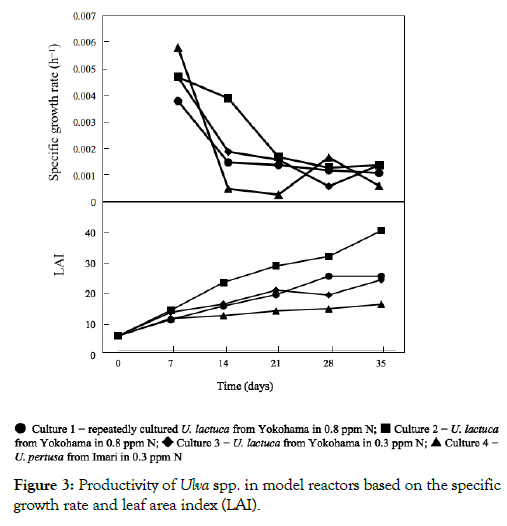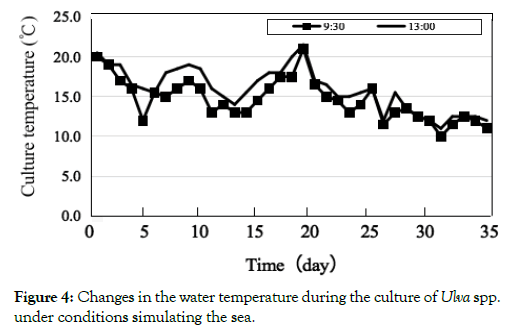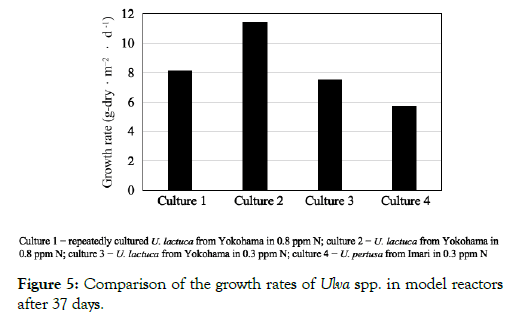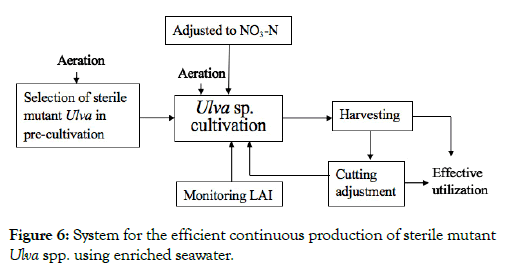Indexed In
- Online Access to Research in the Environment (OARE)
- Open J Gate
- Genamics JournalSeek
- JournalTOCs
- Scimago
- Ulrich's Periodicals Directory
- Access to Global Online Research in Agriculture (AGORA)
- Electronic Journals Library
- Centre for Agriculture and Biosciences International (CABI)
- RefSeek
- Directory of Research Journal Indexing (DRJI)
- Hamdard University
- EBSCO A-Z
- OCLC- WorldCat
- Scholarsteer
- SWB online catalog
- Virtual Library of Biology (vifabio)
- Publons
- MIAR
- University Grants Commission
- Euro Pub
- Google Scholar
Useful Links
Share This Page
Journal Flyer

Open Access Journals
- Agri and Aquaculture
- Biochemistry
- Bioinformatics & Systems Biology
- Business & Management
- Chemistry
- Clinical Sciences
- Engineering
- Food & Nutrition
- General Science
- Genetics & Molecular Biology
- Immunology & Microbiology
- Medical Sciences
- Neuroscience & Psychology
- Nursing & Health Care
- Pharmaceutical Sciences
Research Article - (2020) Volume 11, Issue 5
Long-term Culture Characteristics of Sterile Ulva spp. (Chlorophyta)
Shin Hirayama1*, Shuichi Tashiro2, Kohei Inoue2, Kazuya Urata2, Masafumi Iima3 and Yasuyuki Ikegami22Institute of Ocean Energy, Saga University, 1 Honjo, Saga, 840-8502, Japan
3Faculty of Environmental Science, Nagasaki University, 1-14, Bunkyo, Nagasaki, 852-8521, Japan
Received: 15-May-2020 Published: 30-May-2020, DOI: 10.35248/2155-9546.20.10.590
Abstract
Sterile mutants of green algae in the genus Ulva have the potential to grow stably and are expected to be a suitable food or feed resource containing various nutrients, such as proteins and minerals. In this study, we isolated U. lactuca and U. pertusa from Tokyo Bay and Imari Bay, respectively, in Japan and evaluated their growth rates using a model reactor at Imari. The newly isolated U. lactuca had a growth rate of approximately 11.4 g-dry·m−2·d−1, which is estimated to be seven times greater than the rice yield in paddy fields, while repeatedly cultured U. lactuca had a growth rate of 8.1 g-dry·m−2·d−1. We also demonstrated that this species could be produced in subculture. Heavy metal analysis showed that after culture production, As, Cr, Pb, and Zn were present at concentrations of 0.1 ppm or less and Cd and Hg were below the detection limit for both Ulva species, indicating that long-term cultured sterile Ulva species have almost no accumulation of heavy metals and so would meet safety requirements for use in foods and feeds. Based on these findings, we designed a new type of efficient production system for sterile mutant Ulva spp. using enriched seawater.
Keywords
Ulva lactuca; Ulva pertusa; Growth rate; Heavy metal accumulation; Food production
Introduction
The inner bays of Japan are experiencing eutrophication due to the import of large quantities of food and overcrowding, as a result of which coastal fisheries are expected to decline due to a decrease in catch [1-3]. Therefore, the development of marine environmental improvement technology is desirable [4]. As part of this technological development, sterile green seaweed in the genus Ulva is being cultured and produced as a functional food and feed for fish and shellfish [5,6], which has the potential to not only reduce N and P levels in the inner bays [7-9] but also improve food self-sufficiency and the production and securing of safe food and feed sources, which are current issues in Japan. Therefore, expanding this production is desirable.
In the present study, long-term culture was carried out for sterile Ulva spp. that had been grown under short-term culture in the laboratory and outdoors, and the culture stabilities and growth rates were evaluated. The findings were then used to develop a continuous culture production system for sterile Ulva spp. using eutrophic seawater as a nutrient source to explore the possibility of food production in eutrophic coastal sea areas.
Materials and Methods
Selection of Ulva spp.
We chose to use U. lactuca obtained from the “Marine Park” at Yokohama in Tokyo Bay in this study, as this species is known to stably increase in culture [7]. We also used U. pertusa collected from Imari Bay for comparison, as this has not previously been cultured.
Cultivation equipment
The main cultivation equipment consisted of a seawater pump, a seawater tank, a water pump, an aeration device, and four culture tanks. Seawater was pumped up by the seawater pump and collected in the seawater tank, from where it was supplied to each culture tank by the water pump. Each 42-L culture tank had light-shielding material covering its sides so that sunlight could only enter from the top surface (0.1 m2) to simulate the light reception situation in the sea. The culture tanks were installed in the daylight solar irradiation area on the north side of Imari Satellite, Institute of Ocean Energy, Saga University, Japan.
Culture conditions
The locations of the Ulva spp. sampling sites in Japan are shown in Figure 1. Ulva lactuca was isolated from Tokyo Bay and U. pertusa was obtained from Imari Bay and their growth rates (g-dry·m−2·d−1) were evaluated using a model reactor at Imari.
Figure 1: Locations of the Ulva spp. sampling sites in Japan.
A total of 254 sheets of 48.5 mm U. lactuca or U. pertusa were added to each culture tank to give a leaf area index (LAI) of 5, and culture was performed at a seawater flow rate of 2 L/h and an aeration rate of 24 L/h. Since the growth rate of U. lactuca has been shown to depend more on the concentration of NO3-N than PO4-P [1], PO4-P was set to a constant value of 0.04 ppm in all four cultures but different concentrations of NO3-N were used as follows: culture 1 - individual readjustment culture of U. lactuca from Yokohama, 0.8 ppm; culture 2 - new U. lactuca culture from Yokohama, 0.8 ppm; culture 3 - new U. lactuca culture from Yokohama, 0.3 ppm; and culture 4 - new U. pergusa culture from Imari, 0.3 ppm. In all four cultures, cultivation was performed at seawater temperatures of 10.5–21.2°C.
Measurement of growth rate
The growth rates on a wet weight basis (hereafter “wet growth rates”; g-wet·m−2·d−1) and the LAIs of the Ulva species were measured during the cultivation period and used as indicators of the growth status. Upon the completion of cultivation, the dry weights of the Ulva species were measured and their growth rates on a dry weight basis (hereafter “dry growth rates”; g-dry·m−2·d−1) were calculated. Measurement of heavy metal contents
The Ulva plants were washed with water, dried with a dryer at 110°C, and treated with concentrated nitric acid, following which any suspended solids were removed by centrifugation. The heavy metal contents of the supernatants were then measured using inductively coupled plasma atomic emission spectroscopy (ICPAES) [10].
Results and Discussion
Culture process for Ulva spp.
The wet growth rates of U. lactuca and U. pertusa in the four cultures were measured to evaluate changes in growth over time (Figure 2). Culture 1 had a growth rate of 92.4 g-wet·m−2·d−1 in the first week and then 62.1–82.1 g-wet·m−2·d−1 until the 37th day after the start of the experiment. Culture 2 had the fastest growth rate, with a value of 103.8 g-wet·m−2·d−1 on the 7th day, which increased to 140.6 g-wet·m−2·d−1 after 14 days and then decreased to 135.8 g-wet·m−2·d−1 on the 21st day, 131.1 g-wet·m−2·d−1 on the 28th day, and 113.9 g-wet·m−2·d−1 on the 37th day. Culture 3 showed a similar trend to culture 1 and confirmed that U. lactuca from Yokohama is able to grow in 0.3mg/L (ppm) NO3-N seawater in Imari Bay. Culture 4 had the lowest growth rate among the four cultures, reaching a maximum growth rate of 117.0 g-wet·m−2·d−1 on the 7th day and then decreasing to growth rates of 32.1–67.0 g-wet·m−2·d−1 after the 14th day.
Figure 2: Changes in the growth rates of Ulva spp. on a wet weight basis during culture under conditions simulating the sea.
The LAI was also measured to assess changes in growth in each culture, which showed that LAI increased gradually in all four culture tanks (Figure 3). Because the specific growth rate was high on the 7th day of culture (Figure 3), the number of individuals was adjusted and the culture was replanted.
Figure 3: Productivity of Ulva spp. in model reactors based on the specific growth rate and leaf area index (LAI).
The water temperature in the culture tanks was monitored during the daytime when sunlight entered the tanks (Figure 4). After 20 days of cultivation, the temperature was generally below 15°C, which coincided with the time when both the wet growth rate and specific growth rate were low (Figures 2 and 3). Therefore, the growth rate was considered to be greatly affected by temperature, supporting the previous finding that U. lactuca from Yokohama shows a high growth rate when the seawater temperature is set to 20–26°C in winter [7].
Figure 4: Changes in the water temperature during the culture of Ulva spp. under conditions simulating the sea.
Evaluation of the growth rate of Ulva spp.
The dry growth rates of the four Ulva cultures after 37 days of culture are shown in Figure 5. Culture 2 had the highest growth rate (11.4 g-dry·m−2·d−1), followed by culture 1 (8.1 g-dry·m−2·d−1), culture 3 (7.5 g-dry·m−2·d−1), and culture 4 (5.7 g-dry·m−2·d−1). Since culture 1 was obtained by preliminarily cultivating U. lactuca from Yokohama for approximately 1 month and then cutting out the grown plants, this highlights the possibility of continuous production of U. lactuca through repeated culture.
Figure 5: Comparison of the growth rates of Ulva spp. in model reactors after 37 days.
The results for culture 3 indicate that while U. lactuca grows vigorously in a sea area containing 1 mg/L (ppm) NO3-N [1], it also showed a high growth rate in Imari Bay seawater with an NO3-N concentration of 0.3 mg/L (ppm), suggesting that this species could be cultured and produced in many inner bays in Japan.
The water in culture tanks 1 and 2 contained 0.8 mg/L (ppm) NO3-N and 0.04 mg/L (ppm) PO4-P, which are the normal concentrations recorded in Tokyo Bay. Therefore, efficient biomass production was possible even under relatively low temperature conditions by supplying air, temperature and air (CO2). In addition, a preliminary test showed that the NO3-N concentration was approximately 30% lower in the culture tanks than in the input seawater, and it has previously been shown that Ulva spp. contain approximately 3.8% N and 0.2% P per unit dry weight [5]. Therefore, it is thought that the cultivation of Ulva spp. fixes N and P from the seawater, which would lead to purification of the inner sea area.
Applicability of cultured Ulva spp. for food and feed production
There is some concern about the accumulation of heavy metals in Ulva spp. that proliferate for a long time in a controlled culture environment. Therefore, to assess this, we measured the heavy metal contents of the Ulva species after 37 days of culture and washing them with water (Table 1). In both U. lactuca from Yokohama and U. pertusa from Imari Bay, Cr, Zn, As, and Pb were present at concentrations of 0.1 ppm (mg/kg) or less and Cd and Hg were below the detection limit, demonstrating that Ulva spp. that had been cultured for a long time had almost no heavy metal accumulation and high safety. Thus, we believe that cultured Ulva spp. could be safely used for food and feed [11-14].
Table 1: Accumulation of heavy metals in cultivated Ulva spp. after 37 days.
| Variables | Cr, Zn, As, Pb | Cd, Hg |
|---|---|---|
| Culture 1 | ≤ 0.1 ppm | N.D. |
| Culture 2 | ≤ 0.1 ppm | N.D. |
| Culture 3 | ≤ 0.1 ppm | N.D. |
| Culture 4 | ≤ 0.1 ppm | N.D. |
N.D.: No Detection
Potential for culture production of Ulva spp.
The findings of the present study indicate that the culture of Ulva spp. has high potential for food production because all of the Ulva spp. that have been produced in culture contain edible parts. Furthermore, no mixed algae were observed during the 37 days of cultivation, indicating that the production of Ulva spp. would require almost no labor equivalent to the mowing that is required for paddy rice production. Interestingly, 500 kg·10a−1·year−1 is the standard rice harvest in Japan using labor-intensive production technology known as “the New Saga Stage” [15], which equates to a biomass growth rate of approximately 1.5 g-dry·m−2·d−1. Therefore, the growth rate obtained for the sterile Ulva spp. in the present study was approximately seven times the potential of conventional grain or rice production.
We also demonstrated that it is possible to repeatedly culture and produce Ulva individuals by cutting out and adjusting the culture (Culture 1). Therefore, in Figure 6, we propose a continuous production system for Ulva spp. that consists of six steps: 1) selection of a sterile Ulva sp., 2) cultivation in a culture tank equipped with an aeration device under nitrogen concentration control using LAI as a growth index, 3) collection and effective use of the plants approximately every 7 days, 4) adjustment of the collected part of Ulva sp. that is cut out, 5) transfer of the cut out Ulva sp. to the culture tank as a seed, and 6) effective use of Ulva sp. residue after drilling. This system enables the continuous production of Ulva sp. under culture conditions while maintaining a high growth rate. Sterile Ulva spp. can be used as a feed and functional food for farmed fish and poultry [5,6]. Therefore, this system has the potential to contribute to food and feed production. Furthermore, the installation of this production system in countries with warm seas would allow food self-sufficiency to be achieved, which is currently an issue for Japan [16], and may help address current concerns about freshwater shortages globally due to climate change [17,18].
Figure 6: System for the efficient continuous production of sterile mutant Ulva spp. using enriched seawater.
The development of a continuous culture production method for Ulva spp. that allows production and harvesting to occur in eutrophic areas is becoming increasingly feasible. Furthermore, Ulva spp. collected from the coast contain a useful sulfur-containing amino acid (D-cysteinolic acid) [19] and have also been reported to have singlet oxygen and neutral fat suppression effects [6]. Therefore, the next step will be to determine the content of useful substances in Ulva spp. grown under culture conditions, with the ultimate goal of accumulating these substances in cultured plants, adding further to their value.
Conclusion
In this study, it was found that Sterile Ulva spp. can be continuously produced for a long period of time. In the future, if evaluation data on useful substances of the cultivated Sterile Ulva spp. are accumulated, it will be possible to achieve both effective utilization of the culture products. Therefore, the proposed Ulva production method using eutrophic seawater can be expected as a new method of producing bio-biomass, which is more productive than conventional agriculture while absorbing and utilizing N and P of seawater. In other words, this production system has the potential to be applied to eutrophied inner bays in warm regions of the world.
REFERENCES
- Ueda N, Tsutsumi H, Yamada M, Takeuchi R. Recovery of the marine bottom environment of a Japanese bay. Mar Pollut Bull. 1994; 28: 676-682
- Ueda N, Tsutsumi H, Yamada M, Hanamoto K. Impact of oxygen-deficient water on the macrobenthic fauna of Dokai Bay and on adjacent intertidal flats, in Kitakyushu, Japan. Mar Pollut Bull. 2000; 40: 906-913
- Kimura H, Notoya M, Fujita D. Nutrient uptake by Undaria undarioides (Yendo) Okamura and application as an algal partner of fish-alga integrated culture. Bull fish Res Agcy. 2007; 19: 43-154.
- Ono A, Tada K, Ichimi K. Chemical composition of Coscinodiscus wailesii and the implication for nutrient ratios in a coastal water, Seto Inland Sea, Japan. Mar Pollut Bull. 2008; 57: 94 -102.
- Rasyid A. Evaluation of nutritional composition of the dried seaweedUlva lactuca from Pameungpeuk waters, Indonesia. Trop Life Sci Res. 2017; 28: 119-125.
- Hirayama S, Miyasaka M, Amano H, Kumagai Y, Shimojo N. Functional sulfur amino acid production and seawater remediation system by sterile Ulva sp. (Chlorophyta). Appl Biochem Biotech. 2004; 112: 101-110.
- Hirayama S, Ookubo S, Miyasaka M. Culture characteristics of the sterile Ulva sp. in enriched seawater and concept of its production facilities. In Proceedings of the International OTEC/DOWA Association '99, In: Uehara H, Wang JH, Ikegami Y, (Eds) IOA & Saga Univ., Saga. 1999; 273-279.
- Bolton JJ, Robertson-Andersson DV, Shuuluka D, Kandjengo L. Growing Ulva (Chlorophyta) in integrated systems as a commercial crop for abalone feed in South Africa: A SWOT analysis. J Appl Phycol. 2009; 21: 575-583.
- Dominguez H, Loret EP. Ulva lactuca, A source of troubles and potential riches. Marine Drugs. 2019; 17: 357-376.
- Chen YE, Cui JM, Yang JC, Zhang ZW, Yuan M. Biomonitoring heavy metal contaminations by moss visible parameters. J Hazard Mater. 2015; 296: 201-209.
- Cruz-Suárez LE, León A, Peña-Rodríguez A, Rodríguez-Peña G, Moll B. Shrimp/Ulva co-culture: A sustainable alternative to diminish the need for artificial feed and improve shrimp quality. Aquaculture. 2010; 23: 64-68.
- Bikker P, van Krimpen MM, Van Wikselaar P, Houweling-Tan B, Scaccia N. Biorefinery of the green seaweed Ulva lactuca to produce animal feed, chemicals and biofuel. J Appl Phycol. 2016; 28: 3511-3525.
- Bansemer MS, Qin JG, Harris JO, Duong DN, Hoang TH. Growth and feed utilisation of greenlip abalone (Haliotis laevigata) fed nutrient enriched macroalgae. Aquaculture. 2016; 452: 62-68.
- Laramore S, Baptiste R, Wills PS, Hanisak MD. Utilization of IMTA-produced Ulva lactuca to supplement or partially replace pelleted diets in shrimp (Litopenaeus vannamei) reared in a clear water production system. J Appl Phycol. 2018; 30: 3603-3610.
- Nakano M. New saga stage rice making movement and its results. Report of the Kyushu Branch of the Crop Science Society of Japan. 1966; 26: 127-129.
- Yano S, Hanasaki N, Itsubo N, Oki T. Potential impacts of food production on freshwater availability considering water sources. Water. 2016; 8: 163-173.
- Hara M. The status quo and the future of global water shortage. Bull Soc Sea Water Sci Jpn. 2001; 55: 122-129.
- Veldkamp TI, Wada Y, Aerts JC, Döll P, Gosling SN. Water scarcity hotspots travel downstream due to human interventions in the 20th and 21st century. Nat Commun. 2017; 8: 15697-15708.
- Ito K. Distribution of D-cystenolic acid in marine algae. Bull Jpn Soc Sci Fish. 1963; 29: 771-775.
Citation: Hirayama S, Tashiro S, Inoue K, Urata K, Iima M, Ikegami Y (2020) Long-term Culture Characteristics of Sterile Ulva spp. (Chlorophyta). J Aquac Res Development 11: 5. doi: 10.35248/2155-9546.20.10.590
Copyright: © 2020 Hirayama S, et al. This is an open access article distributed under the term of the Creative Commons Attribution License, which permits unrestricted use, distribution, and reproduction in any medium, provided the original work is properly cited.







